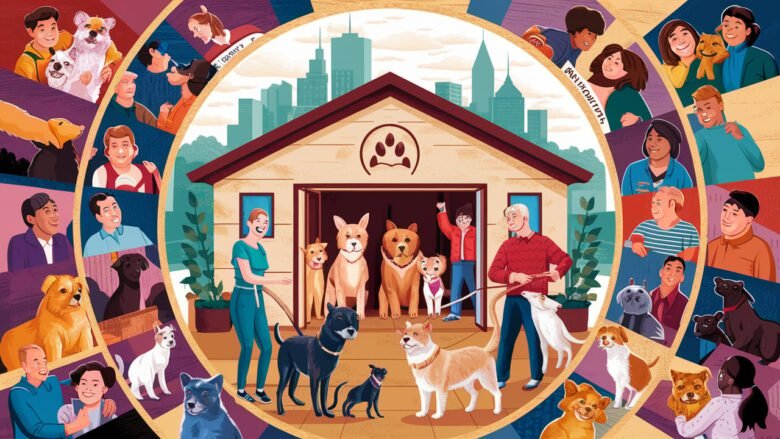Animal shelters and welfare programs play an essential role in ensuring the safety, rehabilitation, and responsible adoption of pets. This article explores various aspects of animal shelters, pet rehabilitation programs, and initiatives aimed at promoting responsible pet ownership, ultimately enhancing the lives of both animals and their future families.
The Role of Animal Shelters
Animal shelters function as vital sanctuaries for stray, lost, and abandoned animals, providing not only housing but also care and rehabilitation. They can be classified into open admission shelters, which accept all animals, and managed admission shelters, which limit intake. Both types play essential roles in managing animal populations and solving the crisis of abandoned pets, but they often face challenges concerning animal outcomes. Common practices to enhance adoption rates include community outreach, education on responsible pet ownership, and partnerships with local organizations, ultimately promoting a compassionate approach to animal welfare.
Pet Rehabilitation Programs and Their Importance
Pet rehabilitation programs are essential for preparing animals in shelters for adoption by addressing medical care and behavioral issues. These programs give neglected and abused pets a second chance, showcasing successful stories that inspire hope.
One example includes a formerly aggressive dog rehabilitated to become a loving companion through positive reinforcement training, illustrating the profound impact on their ability to bond with humans.
Through these efforts, shelters foster an environment that prioritizes the welfare of animals, enhancing their chances of adoption. Such initiatives not only transform animals but also educate the community about responsible pet ownership.
By investing in pet rehabilitation, shelters underscore the importance of commitment and compassion, ensuring that each adopted pet is ready to succeed in a loving home. These programs are critical to reducing the number of animals returned to shelters and improving overall community well-being.
Responsible Cat Adoption Practices
Responsible cat adoption is vital for ensuring a harmonious relationship between adoptive families and their new feline companions. Potential adopters must be aware of the unique characteristics and needs of cats, including their instincts, social behaviors, and environmental requirements. Understanding these factors can significantly enhance the success of the adoption.
Before adopting, individuals should engage in pre-adoption assessments offered by shelters, which often include personality matches based on lifestyle and preferences. This process helps identify the right cat for each adopter and sets the stage for a successful transition into a new home. It also emphasizes the importance of committing to the long-term care of a pet, which can span 15 years or more.
Post-adoption support is equally crucial. Shelters and welfare programs often provide resources to assist adopters in managing any behavioral or health issues that may arise. This ongoing support not only reinforces responsible pet ownership but also cultivates a deeper understanding of feline behavior, helping owners recognize and address needs effectively.
Additionally, responsible cat adoption practices contribute to reducing the overwhelming number of homeless animals. Educated adopters create a ripple effect in the community, advocating for the importance of spaying and neutering and raising awareness about the significance of adopting over purchasing pets. These efforts intertwine with broader animal welfare initiatives aimed at ensuring every cat finds a loving home.
Dog Fostering Centers and Community Impact
Dog fostering centers serve as vital links in the journey from shelter to forever home. By offering temporary care for dogs, these centers help alleviate overcrowding in shelters and improve each dog’s chances for successful adoption.
Fostering not only benefits dogs by providing them with love and socialization but also allows fosters to experience the joys of dog ownership without permanent commitment. This arrangement fosters empathy, responsibility, and community engagement among participants.
Moreover, fostering programs serve broader community interests by promoting responsible pet ownership and awareness about animal welfare. They create networks of support that encourage community members to participate in shelter initiatives and advocate for humane treatment of animals.
Conclusions
In conclusion, animal shelters, rehabilitation programs, and welfare initiatives are vital for promoting responsible pet ownership and enhancing the lives of countless animals. By understanding and supporting these efforts, we can contribute to a more compassionate society, ensure that all pets find loving forever homes, and advocate for the continuation of these crucial programs.



